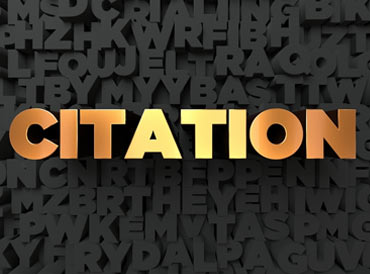The American Psychological Association’s (APA) standard style is extensively used to cite psychology, education, and social sciences sources. The basic criteria for the APA style were spelt down in a 1929 essay published in Psychological Bulletin. The APA Publication Manual eventually incorporated these guidelines. This kind of research paper writing is primarily employed in the social sciences, such as psychology, anthropology, sociology, education and other fields. Because it aids writers in presenting their ideas in a clear, precise, and inclusive manner, the APA format serves as a foundation for efficient scholarly communication.
The American Psychological Association (APA) format is best described as a style of writing that is ideal for expressing psychological research findings, particularly in academic and professional settings. It’s not the same thing as effective writing in general. Even if it was founded on psychoanalytic notions, you would not write a literary analysis in APA format for an English class. Instead, you’d use the Modern Language Association (MLA) style. Even if it was about a new advance in cognitive science, you wouldn’t write a newspaper piece in APA format. Instead, you’d use the Associated Press (AP) style. So the APA format is commonly used for research-based writings that include APA citations and APA referencing. In academic writing, the students use the APA format and are directed by the institutions. The academic writing services UK that students usually consider throughout their academic career include APA format and styling.
Where Did the APA Format Originate?
The American Psychological Association (APA) Style was founded in 1929 by a group of psychologists, anthropologists, and marketing executives who wanted to make a basic set of processes or style rules that would standardize the many components of scientific writing and make it easier to read. They described their rules as a “standard of procedure, to which exceptions would probably be essential, but which reference should be made in times of doubt” in a seven-page essay published in Psychological Bulletin.
Since then, the breadth and length of the Publication Manual have expanded to meet the demands of researchers, students, and educators in a variety of fields, including social and behavioral sciences, health care, natural sciences, humanities, and others. It keeps on introducing new levels of formats.
How Does APA Format Work in Academic Writing?

There are two things to remember while working with the APA format. One in-text APA citation, and the second the APA referencing. Within your research report, in-text citations will use the author’s name and the dates. These citations will point to the reference page at the end of your research paper, which will detail all of the sources you used.
So basically, it is critical to add citations in your text when writing your paper to show where you got the material you used. In-text citations are such notations, and the APA format specifies that you use the author’s name followed by the date of publication when citing in APA format in the text of your document. Depending on whether you’re citing an author or authors, a book or journal article, or an electronic source, the format of each individual reference may differ slightly. One needs to master the skill before using the APA format. Professional academic writers effortlessly use such formats in their writings and assist students with their work.
Why Is APA Format Important?
The standardization and clarity that the APA format gives allows readers to concentrate on the ideas better rather than the formatting and swiftly examine works for essential points, discoveries, and sources. Authors and academic writers follow APA format requirements to ensure that key information is adequately disclosed and those small distractions, such as inconsistencies or omissions in grammar, in-text citations, references, capitalization, and the display of data, are avoided.
Ideas flow logically, sources are properly attributed, and documents are organized predictably and consistently when APA format is used properly. Apart from styling, writers arrange for ethical compliance and report key aspects of their research methodology so that readers can assess the findings and other researchers can potentially reproduce the research. Tables and figures show data in a consistent and compelling manner. This all leads to an easy flow of communication.
APA Citations – Students Guide

When utilizing APA format, use the author-date format of in-text referencing. This indicates that the author’s last name and the year the source was published should be included in the text, such as (Bill, 1945). The reference page at the end should include one complete reference for each source.
If you’re citing an idea from another work but aren’t directly quoting it, or if you’re referring to an entire book, essay, or other work, you only need to include the author’s name and publication year in your in-text reference, not the page number.
If you are explicitly citing or borrowing from another work, on the other hand, the page number should be included at the conclusion of the parenthetical reference. Use the abbreviation “p.” (For one page) or “pp.” before specifying the page number (For several pages). For page ranges, use an ‘en dash’. (Thomas, 1675, p. 32) or (Evans, 1898, pp. 19–21) are two examples. Regardless of how they are mentioned, all sources listed in the text must be in the reference list at the end of the work.
Capitalization, Quotations, And Italics/Underlining in The Text
Capitalization of proper nouns like author names is a must. All terms in the title of a source that are four letters or longer should be capitalized if they are mentioned in your work. Short words like verbs, nouns, pronouns, adjectives, and adverbs are exceptions.
- When capitalizing a hyphenated compound word, capitalize both words: “Organic-Food Types.”
- After a colon or hyphen, capitalize the first word: “Creation Of Salt: A New Taste!”
- If the work’s title is italics in your reference list, italicize it in the text and capitalize it with title case capitalization: “The Decline of the American Culture; The Kingdom of Wicked; Companions.”
- Even if your reference list utilizes sentence case, use double quotation marks and title case capitalization if the work’s title is not italicized in the reference list.
Short Direct Quotes
Suppose you are directly quoting from a work. In that case, you must provide the author’s name, year of publication, and page number (denoted by “p.” for a single page and “pp.” for many pages, with the page numbers that are differentiated by a dash) in the reference. You can make use of a phrase that includes the author’s last name and the date of publication in brackets to start the quotation.
Long Quotes
Direct quotations of 40 words or more should be typed in a free-standing block with no quotation marks. Begin the citation on a new line, a half-inch from the left margin, indented, as if you were starting a new paragraph. Indent the beginning line of any consecutive paragraph inside the quotation a half-inch from the new margin, and type the full quotation on the new margin. Maintain double-spacing throughout, but don’t include a blank line before or after it. After the final punctuation mark, place the parenthetical citation.
Quotations from Sources Without Pages

A page number should not be referenced in direct quotations from sources that do not contain pages. Instead, you may use a paragraph, a chapter number, a section number, a table number, or something else as a logical identifier. Special location identifiers, such as verse numbers, can be found in older works like religious writings. In a nutshell, choose a page number substitution that makes sense for your source.
For example:
Smith (2003) identified three causes behind kids’ frustration with existing school structures (paragraphs 8-9).
Abstract, Paraphrase or Summary
If you’re summarizing a concept from another source, your in-text citation just has to include the author and publication year; page numbers are optional. When a summary or paraphrase may help the reader identify information in a lengthy text, APA rules recommend giving a page range.
For example:
According to Bill (2008), Adults face less difficulty in applying the APA format.
Final Thoughts
The American Psychological Association (APA) format is a set of norms for writing in the field of psychology. Psychologists use a type of writing to communicate with other researchers and practitioners about their work. There are levels to the APA format. The structuring of a research article, the high-level style, which comprises writing in a formal and plain manner, and the low-level style, which contains numerous specific grammar, spelling, and reference formatting guidelines, among other things.
The APA format relies heavily on references and reference citations. Above are highlighted the basic guidelines for students regarding AP format and reference citations. From citation of direct quotes to long quotations, short quotations and paraphrasing, each citation method is mentioned to help students understand about APA format. This will definitely help students in their academic writing. For professional assistance, however, students prefer taking academic writing services UK.
